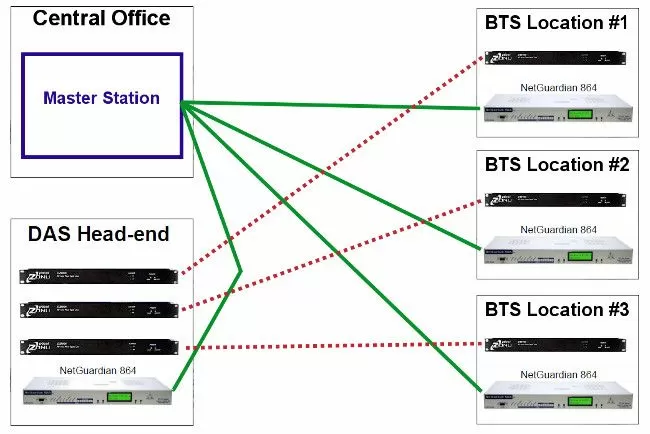Download our free SNMP White Paper. Featuring SNMP Expert Marshall DenHartog.
This guidebook has been created to give you the information you need to successfully implement SNMP-based alarm monitoring in your network.
1-800-693-0351
Have a specific question? Ask our team of expert engineers and get a specific answer!
Sign up for the next DPS Factory Training!

Whether you're new to our equipment or you've used it for years, DPS factory training is the best way to get more from your monitoring.
Reserve Your Seat TodayYour Base Transceiver Stations (BTS) sites provide cellular service to thousands of people - making reliability really important. Whether your towers are in rural areas or in urban population centers, your customers count on you for reliable cell coverage.
The BTS system is the part of a GSM network that is responsible for the reception and transmission of radio signals from mobile phones.
With wireless coverage being such a large part of everyday life for so many people, customers aren't so forgiving when service is spotty. One offline tower could mean the difference between happy customers and losing them to your competitors forever.

So how do you ensure the reliability of your BTS sites? Good remote monitoring and control systems give you visibility over all of your equipment and tower sites.
Let's consider an example based on the diagram above:
Many infrastructure devices have embedded "self-monitoring" features, but don't be fooled. When do you need monitoring most? After an equipment failure.
But when it fails, your equipment can't monitor itself or anything else. Embedded monitoring features are usually rendered useless right when you need them.
You can use your SNMP manager to monitor all of your SNMP gear, but what about other equipment? If you have gear that does not natively support SNMP, your master won't be able to communicate directly to it.
What you need is a monitoring device that can translate discrete points, also known as dry contact closures, into SNMP messages that your master can understand. That is the job of an SNMP RTU.
Make sure that any SNMP RTU that you purchase meets these requirements:
One SNMP RTU that's capable of handling BTS/DAS monitoring is the NetGuardian 864A G5 by DPS Telecom. It can take discrete points and convert them into SNMP messages for your master station. But, there are also many other RTUs to handle a variety of network needs.
At DPS, we receive many urgent quote requests after an earlier "Do Nothing" decision comes back to bite you. You have no reason not to be proactive (and maybe you'll manage to impress your boss).
Call us. Chat with an expert for 10 minutes. We'll email you a detailed quote with a custom application drawing. We'll even include a summary of business benefits you can use to justify your project budget.
Call 1-800-693-0351 now for your quote or send us a quick online message instead